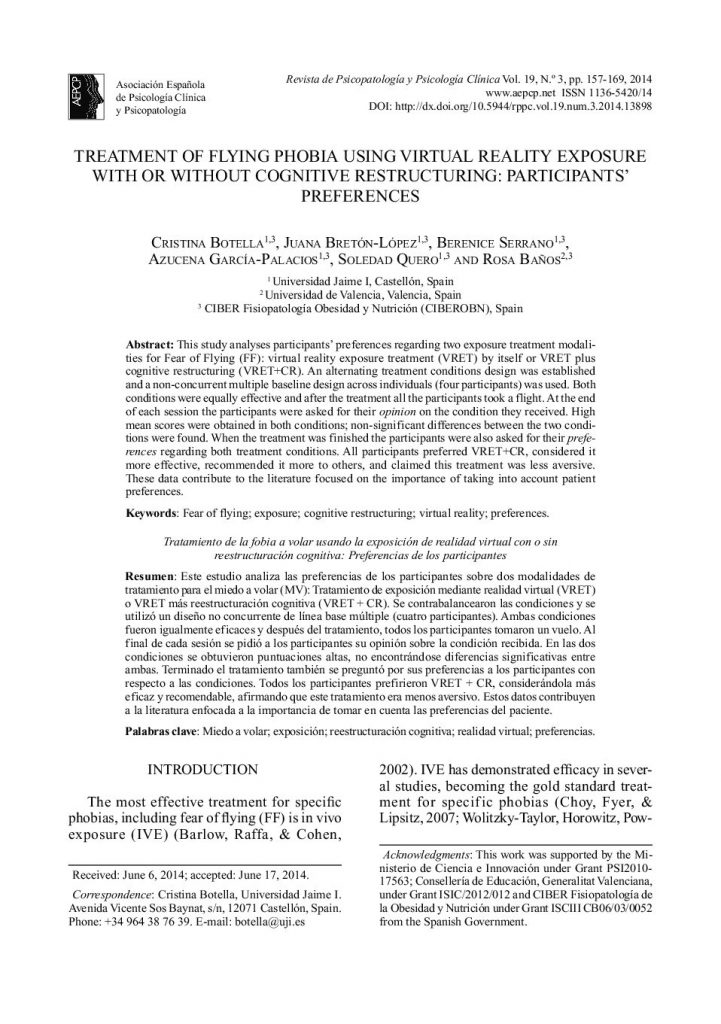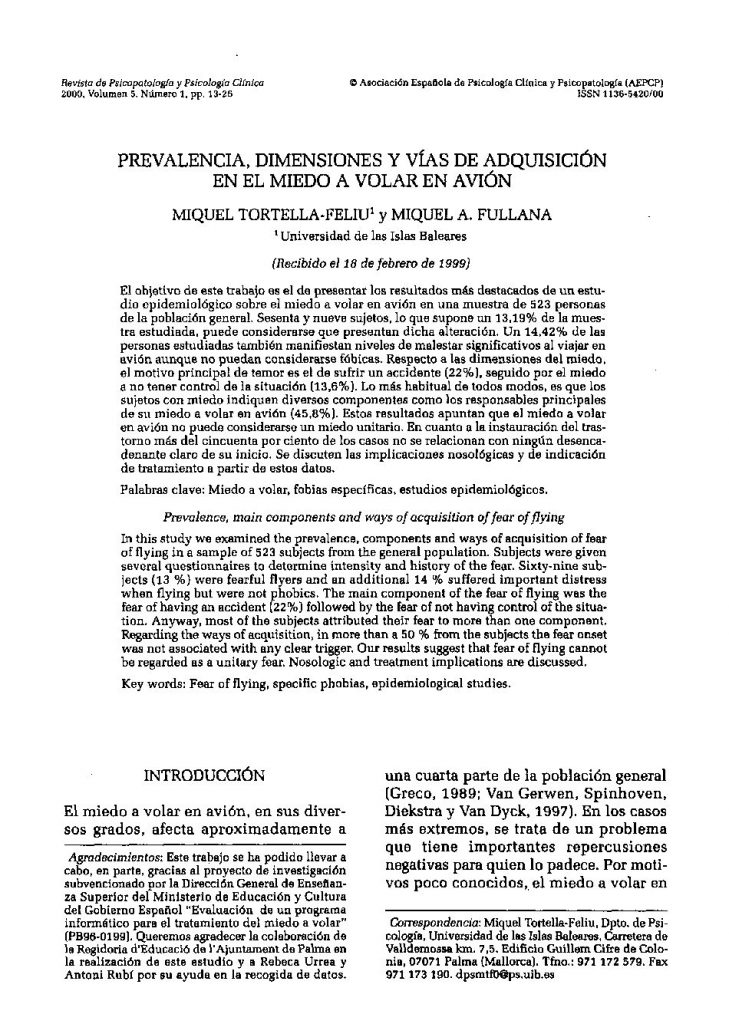Treatment of flying phobia using virtual reality exposure with or without cognitive restructuring: participants’ preferences.

- El uso de las tecnologías de la información y la comunicación en psicología clínica.
- Inducción de craving por comida mediante realidad virtual no inmersiva.
- Serious games for the treatment or prevention of depression: A systematic review.
- Psychological treatments for depression delivered via the internet and supported by a clinician: An update.
- Internet interventions for depressive disorders: An overview.
- Los efectos secundarios negativos de la inmersión con realidad virtual en poblaciones clínicas que padecen ansiedad.
- La validación transcultural de intervenciones clínicas basadas en evidencia para el tratamiento de trastornos de ansiedad.
- El uso de una red social segura para el estudio de la ansiedad en la adolescencia.
- Treatment of flying phobia using virtual reality exposure with or without cognitive restructuring: participants’ preferences.
- Smartphone for self-management of psychological stress: a preliminary evaluation of positive technology app.
- Congresos y reuniones científicas 2014.
This study analyses participants’ preferences regarding two exposure treatment modalities for Fear of Flying (FF): virtual reality exposure treatment (VRET) by itself or VRET plus cognitive restructuring (VRET+CR). An alternating treatment conditions design was established and a non-concurrent multiple baseline design across individuals (four participants) was used. Both conditions were equally effective and after the treatment all the participants took a flight. At the end of each session the participants were asked for their opinion on the condition they received. High mean scores were obtained in both conditions; non-significant differences between the two conditions were found. When the treatment was finished the participants were also asked for their preferences regarding both treatment conditions. All participants preferred VRET+CR, considered it more effective, recommended it more to others, and claimed this treatment was less aversive. These data contribute to the literature focused on the importance of taking into account patient preferences.
Este estudio analiza las preferencias de los participantes sobre dos modalidades de tratamiento para el miedo a volar (MV): Tratamiento de exposición mediante realidad virtual (VRET) o VRET más reestructuración cognitiva (VRET + CR). Se contrabalancearon las condiciones y se utilizó un diseño no concurrente de línea base múltiple (cuatro participantes). Ambas condiciones fueron igualmente eficaces y después del tratamiento, todos los participantes tomaron un vuelo. Al final de cada sesión se pidió a los participantes su opinión sobre la condición recibida. En las dos condiciones se obtuvieron puntuaciones altas, no encontrándose diferencias significativas entre ambas. Terminado el tratamiento también se preguntó por sus preferencias a los participantes con respecto a las condiciones. Todos los participantes prefirieron VRET + CR, considerándola más eficaz y recomendable, afirmando que este tratamiento era menos aversivo. Estos datos contribuyen a la literatura enfocada a la importancia de tomar en cuenta las preferencias del paciente.




